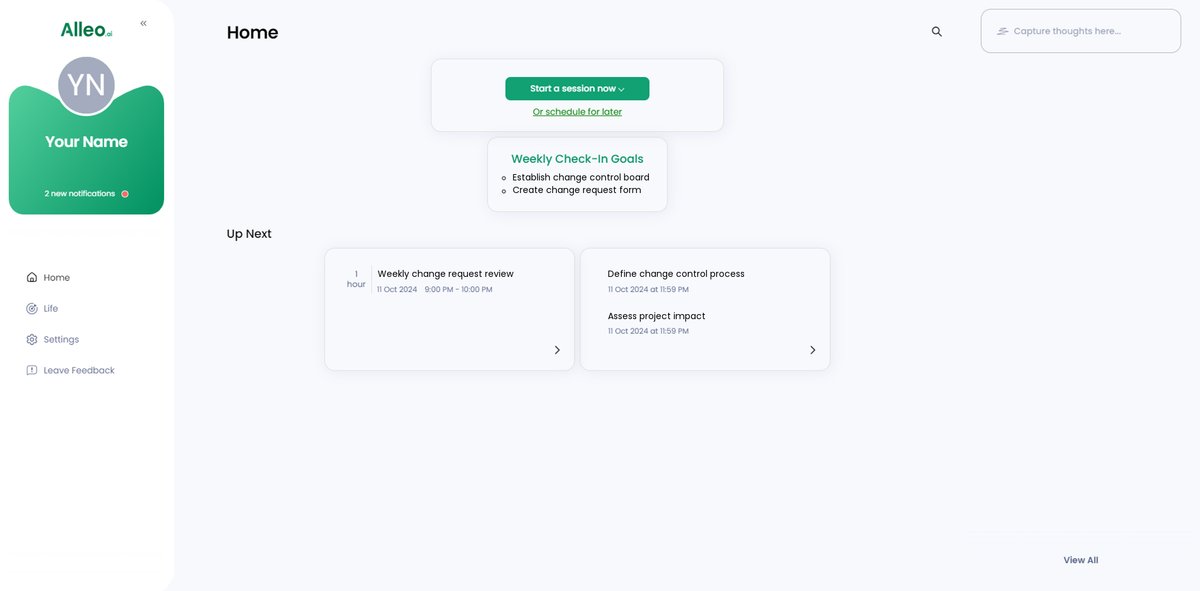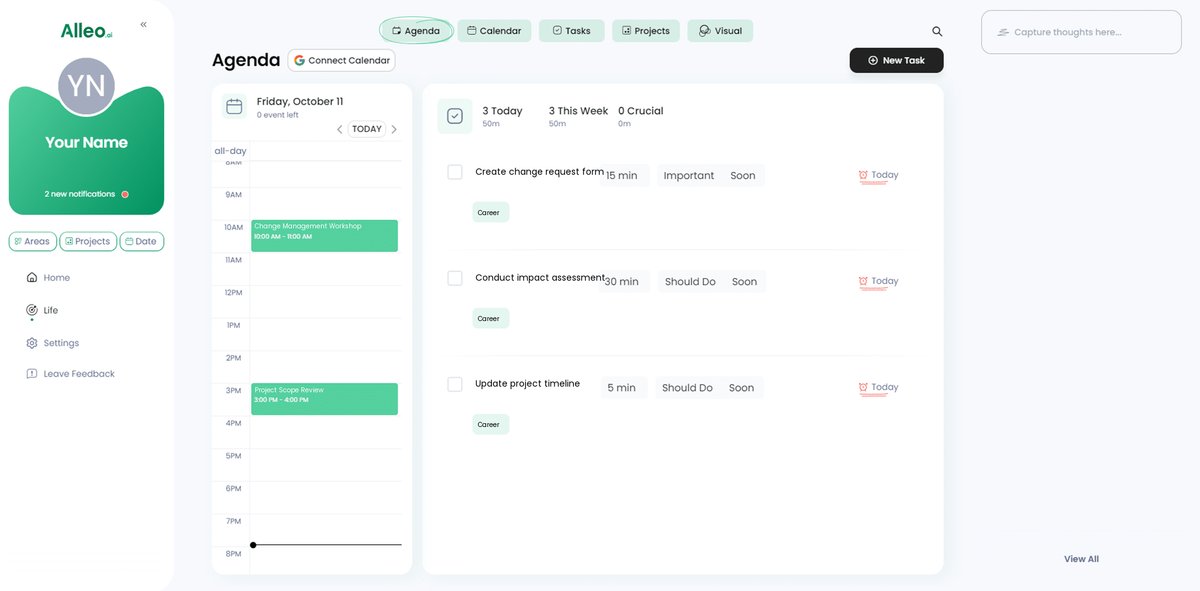4 Essential Strategies for Project Managers to Handle Late-Stage Change Requests
What if you receive a significant change request just as your project is nearing completion? This scenario is a common challenge in managing late-stage project changes.
Imagine the panic that sets in and the uncertainty about how to manage this without derailing the entire project. Effective change management in projects becomes crucial at this point.
As a life coach, I’ve helped many professionals navigate these exact challenges. I’ve often seen project managers struggle with balancing stakeholder communication strategies and scope creep prevention.
In this article, you’ll discover specific strategies to handle late-stage change requests effectively. We’ll cover formal change control processes, impact assessments, and clear communication techniques for managing late-stage project changes. We’ll also explore project timeline adjustments and resource allocation for unexpected changes.
Let’s dive in to learn about managing late-stage project changes and maintaining project flexibility and adaptability.

Understanding the Complexity of Late-Stage Change Requests
One of the biggest challenges project managers face is managing late-stage project changes. These requests can lead to scope creep, where project boundaries expand beyond initial plans without additional resources or time.
In my experience, many clients struggle with the uncertainty and stress these changes bring. Picture a project manager grappling with a last-minute stakeholder demand that threatens to derail the entire timeline and budget, highlighting the importance of client expectation management.
Late-stage changes often create resource constraints, forcing teams to stretch beyond their limits. This can lead to burnout and decreased morale among team members, emphasizing the need for effective resource allocation for unexpected changes.
Moreover, balancing stakeholder expectations becomes a tightrope walk. Stakeholders may have conflicting interests, making it difficult to satisfy everyone while maintaining project integrity. This underscores the importance of stakeholder communication strategies in managing late-stage project changes.
Ultimately, poor change management in projects can severely impact project success and stakeholder satisfaction. It’s crucial to address these challenges effectively to ensure project viability and team well-being, often requiring project flexibility and adaptability.
Understanding these common issues helps us appreciate the necessity of a structured approach to managing late-stage change requests, including risk assessment for late changes and prioritizing change requests.

Key Strategies for Managing Late-Stage Change Requests
Overcoming this challenge of managing late-stage project changes requires a few key steps. Here are the main areas to focus on to make progress in change management in projects:
- Implement a Formal Change Control Process: Establish a structured approach to review and approve change requests, aiding in scope creep prevention.
- Conduct Impact Assessments on Project Constraints: Assess how changes affect scope, timeline, and budget, incorporating risk assessment for late changes.
- Communicate Changes Clearly to All Stakeholders: Ensure everyone is informed and on the same page, using effective stakeholder communication strategies.
- Negotiate Timeline/Resource Adjustments if Needed: Adjust schedules and resources to accommodate changes, focusing on project timeline adjustments and resource allocation for unexpected changes.
Let’s dive into these strategies for managing late-stage project changes!
1: Implement a formal change control process
It’s crucial to establish a structured approach to managing late-stage project changes to maintain project integrity and stakeholder satisfaction. Effective change management in projects is key to preventing scope creep and ensuring project flexibility and adaptability.
Actionable Steps:
- Establish a Change Control Board (CCB): Assign roles and responsibilities within the CCB and schedule regular meetings to review and approve change requests, focusing on prioritizing change requests and resource allocation for unexpected changes.
- Develop a Change Request Form: Create a form that includes fields for detailed descriptions, reasons, and potential impacts. Make sure the form is easily accessible to all stakeholders, supporting stakeholder communication strategies.
- Create a Change Log: Document all change requests and their statuses, then regularly update and share the log with the project team to facilitate project timeline adjustments and risk assessment for late changes.
Explanation:
These steps help ensure that change requests are systematically reviewed, evaluated, and documented. This approach minimizes disruptions and aligns with industry best practices for managing late-stage project changes and agile project management techniques.
According to ProjectManager.com, a formal change control process is essential for maintaining project scope, schedule, and budget. By implementing these steps, you can manage changes efficiently and keep your project on track while addressing client expectation management.
Key benefits of a formal change control process include:
- Improved project stability
- Enhanced stakeholder satisfaction
- Better risk management
Having a structured change control process in place allows you to respond to changes without jeopardizing the project’s success, effectively managing late-stage project changes.

2: Conduct impact assessment on project constraints
Conducting an impact assessment on project constraints is crucial to ensure changes do not disrupt the project’s overall success when managing late-stage project changes.
Actionable Steps:
- Assess the Impact on Scope: Identify how the change request affects project deliverables. Use a Work Breakdown Structure (WBS) to map out changes and prevent scope creep.
- Evaluate the Impact on Timeline: Analyze how the change will alter the project schedule. Use Gantt charts or similar tools to visualize timeline adjustments for effective change management in projects.
- Review the Impact on Budget: Calculate additional costs associated with the change. Adjust the project budget accordingly and seek approval if necessary, considering resource allocation for unexpected changes.
Explanation:
These steps matter because they help you understand the full implications of change requests on your project constraints when managing late-stage project changes.
By assessing the impact on scope, timeline, and budget, you can make informed decisions and maintain project flexibility and adaptability.
According to Kissflow, conducting thorough impact assessments is essential for avoiding scope creep and ensuring project success.
This structure allows you to manage changes effectively, keeping your project on track and stakeholders satisfied through strategic stakeholder communication strategies.

3: Communicate changes clearly to all stakeholders
Effective communication ensures everyone understands the changes and their implications, maintaining project alignment when managing late-stage project changes.
Actionable Steps:
- Develop a Communication Plan: Define communication channels and frequency for updates. Ensure all stakeholders know the plan for change management in projects.
- Hold Regular Status Meetings: Schedule meetings to discuss change requests and their impacts. Address concerns and gather feedback, implementing agile project management techniques.
- Provide Detailed Reports: Create comprehensive reports on the status of change requests. Share these reports with all relevant parties to maintain transparency and improve stakeholder communication strategies.
Explanation:
These steps matter because clear communication helps prevent misunderstandings and keeps everyone aligned with the project’s goals, crucial for managing late-stage project changes.
According to VoltageControl, clear and consistent communication is essential for managing change effectively.
By implementing these steps, you can ensure all stakeholders are informed and engaged, leading to better project outcomes and scope creep prevention.
Key elements of effective change communication include:
- Transparency in decision-making
- Regular updates on progress and project timeline adjustments
- Open channels for feedback and risk assessment for late changes
This approach will help you manage changes smoothly, keeping your project on track and stakeholders satisfied while prioritizing change requests and ensuring project flexibility and adaptability.

4: Negotiate timeline/resource adjustments if needed
Negotiating timeline and resource adjustments is essential to accommodate significant late-stage project changes without compromising project success.
Actionable Steps:
- Prioritize Change Requests: Evaluate and rank each request based on urgency and alignment with project goals. Focus on high-priority changes when managing late-stage project changes.
- Allocate Resources Effectively: Reassign team members or other resources to manage the change. Ensure this does not negatively impact other project areas, using agile project management techniques.
- Adjust the Project Timeline: Collaborate with stakeholders to set new deadlines if necessary. Communicate any schedule updates clearly to the entire team, employing stakeholder communication strategies.
Explanation:
These steps are crucial as they help maintain project integrity while accommodating changes. By prioritizing changes, reallocating resources, and adjusting schedules, you can ensure that the project remains on track while managing late-stage project changes.
According to Float, effective change management processes are vital to manage disruptions and meet project goals efficiently.
Strategies for successful timeline and resource negotiation:
- Maintain open dialogue with stakeholders
- Be flexible but realistic in adjustments
- Document all agreed-upon changes
Remember, balancing these adjustments can keep your project progressing smoothly and stakeholders satisfied while effectively managing late-stage project changes.

Partner with Alleo to Manage Late-Stage Change Requests
We’ve explored the challenges of managing late-stage project changes and effective strategies for change management in projects. But did you know you can work directly with Alleo to make this process easier?
Setting up an account with Alleo is simple. Create a personalized plan tailored specifically to your project management needs, including scope creep prevention and risk assessment for late changes.
Use Alleo’s goal-setting feature to track change request objectives and prioritize change requests. Utilize Alleo’s scheduling tools to adjust project timelines seamlessly, incorporating agile project management techniques.
Leverage Alleo’s communication features to keep all stakeholders informed, enhancing your stakeholder communication strategies.
The AI coach will follow up on your progress, handle changes, and keep you accountable via text and push notifications, supporting project flexibility and adaptability.
Ready to get started for free? Let me show you how to improve your resource allocation for unexpected changes and client expectation management!
Step 1: Log in or Create Your Account
To start managing your late-stage change requests effectively, log in to your existing Alleo account or create a new one to access our AI-powered project management tools.

Step 2: Choose “Building better habits and routines”
Select “Building better habits and routines” to develop a structured approach for managing late-stage change requests effectively, helping you establish a consistent process for handling project modifications and maintaining stakeholder satisfaction.

Step 3: Select “Career” as Your Focus Area
Choose “Career” as your life area to focus on, as it aligns perfectly with managing late-stage project changes and enhancing your project management skills, helping you navigate complex workplace challenges more effectively.

Step 4: Starting a coaching session
Begin with an intake session to establish your personalized plan for managing late-stage change requests, setting goals and strategies tailored to your project’s specific needs.

Step 5: Viewing and managing goals after the session
After your coaching session on managing late-stage change requests, check the Alleo app’s home page to view and manage the goals you discussed, allowing you to track your progress in implementing effective change control processes and communication strategies.

Step 6: Adding events to your calendar or app
Use Alleo’s calendar and task features to track your progress in managing late-stage change requests, allowing you to easily schedule meetings, set deadlines for impact assessments, and monitor the implementation of your change control process.

Bringing It All Together: Your Path to Successful Change Management
By now, you understand the complexities of managing late-stage project changes. It’s a daunting task, but not impossible.
Remember, implementing a formal change control process is crucial for managing late-stage project changes. It keeps everything organized and aids in scope creep prevention.
Conducting thorough impact assessments helps you foresee challenges and is essential for risk assessment for late changes. This way, you can plan effectively using agile project management techniques.
Clear communication with stakeholders ensures everyone stays on the same page. It prevents misunderstandings and aligns goals, which is key to stakeholder communication strategies.
Don’t forget to negotiate timelines and resources when necessary. Flexibility is essential for success when managing late-stage project changes, including project timeline adjustments.
With these strategies, you can handle late-stage changes smoothly. Your projects will stay on track, demonstrating project flexibility and adaptability.
Lastly, consider using Alleo to support these efforts. It simplifies the process of managing late-stage project changes and keeps you organized.
Ready to tackle those change requests? Give Alleo a try for free and see the difference it makes in prioritizing change requests and resource allocation for unexpected changes.